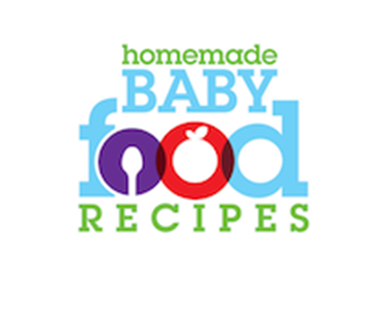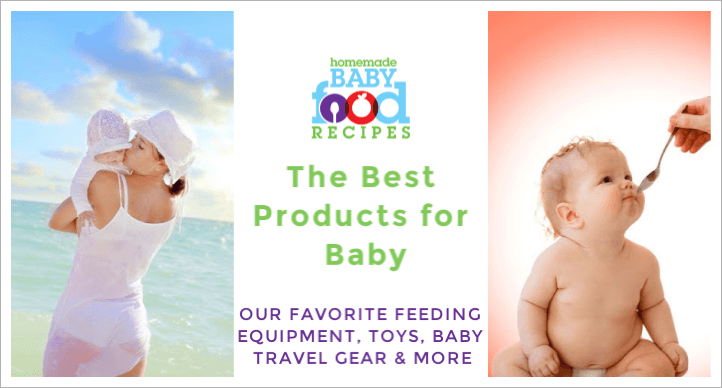When to Introduce Meat to Baby
Updated: Nov 13, 2023
Learn when and how to introduce meat to baby and use our tips to help you create perfect meat baby food purees!
When can my baby eat meat?
Traditionally, medical professionals have recommended introducing meat to baby from around 7 months of age.
Chicken/turkey is usually introduced first and red meats next.
However, recent research has suggested that meat should be introduced as one of the first – or even THE first – complementary foods for babies, generally from 6 months of age.
This is true for breastfed babies in particular.
The iron from breast milk is very bioavailable (meaning it is well absorbed by babies – see this page for more information).
However, when exclusively breastfed babies are introduced to solid foods, they begin to absorb less iron from their milk.
This is because the iron in breast milk becomes ‘bound’ by the solid food they are consuming (commonly infant rice cereal).
Thus, it becomes important to ensure that the solid food given to a previously exclusively breastfed infant is high in iron.
And one of the best sources of iron is, of course, meat (beef and lamb in particular).
Furthermore, new studies have found that the more finely ground the meat, the more easily the body can absorb this iron (more about that in our ‘How to Puree Meats’ section below).
Please note: Meat is a high protein food – and very large amounts of protein may put a lot of strain on your baby’s immature kidneys (read more about protein here).
Therefore, we recommend offering regular, small quantities of meat mixed into another food (pureed vegetables, for example).
Read more about choosing the best first food for baby
Preparation and Cooking Tips
A common concern about introducing meat to baby is that it may be more difficult to digest than most fruits and vegetables.
However, correctly tenderizing, cooking and then pureeing meat breaks down its fibres and connective tissues and vastly improves its digestibility.
Planning on introducing pieces of meat for baby to eat by himself?
Then learn more about Baby Led Weaning
Handy tip
Pound your meat as soon as you bring it home from the grocery store, BEFORE you freeze it. This will save you precious minutes at mealtimes!
Give your meat a good pounding!
You can tenderize meat before cooking it by removing all visible fat, placing it between two sheets of plastic wrap, then pounding it.
You can use a meat pounder, a heavy rolling pin or even a heavy frying pan to do this. Flatten it to about 1/4 – 1/2 inch thickness all over (any thinner and it may tear).
Marinate meat for your baby
In many cuisines across the world (Indian cuisine in particular) meat is marinated in milk or yogurt to tenderize it (the lactic acid in dairy products is believed to be responsible for this effect).
Do NOT try this technique if your baby is sensitive to dairy products.
You might also like to try tenderizing meat by marinating it in apple juice.
You may then simmer the meat in the apple juice to cook it, giving both a tasty and tender result!
Don’t dry out your meat during cooking
Unless you will be pureeing meat to an almost powder-like consistency, don’t allow it to dry out too much during the cooking process or it will be tough and unappealing to your baby.
Please note, however, that it is very important to ensure that the meat you prepare for your baby is thoroughly cooked and not at all ‘rare’.
Nevertheless, fully cooked meat does not have to be dry and tasteless!
Meat cooked within stews or casseroles is perfect for baby as it breaks down easily, is full of flavour and tender.
Handy tip
Foil wrapped meals make a great time saver!
Why?
No cooking pots to wash up afterwards!
If you choose to fry meat for your baby (which is only good for tender cuts), use a very hot pan.
This seals in the meat juices and gives a more tender result.
If the piece of meat is very thick, cooking over a high heat may mean that the outside burns before the inside is cooked – so lower the heat, but cover the frying pan/skillet to hold in the moisture.
Or why not try one of the easiest methods of ‘moist heat cooking’ – cooking meat in foil.
Just cut a square of foil and place your piece of meat in the middle (you can add herbs and diced veggies if you like, to create a complete meal).
Wrap loosely and fold the edges to keep in the steam (which will cook the contents of the parcel).
The cooking time will, of course, depend on the thickness of the meat – but a chicken breast cooked at 400 deg F should be ready in about 30 mins.
Another very simple way to cook meat for your baby is by simmering it in broth/stock.
Add diced veggies towards the end of the cooking time and you have an entire meal in one pot.
You can also do this in the oven – just cover the meat with stock in an oven-proof dish and cook at 375 deg F (190 deg C) until cooked through and tender.
If you would prefer to prepare meat for your baby to feed himself (rather than mashing or pureeing it for spoon feeding) a useful tip is to shred raw meat with the tip of a sharp knife or the tines of a fork.
These little scraps may then be simmered in stock until thoroughly cooked, then served as a finger food.
How To Puree Meat and Poultry for Baby Food
When you initially introduce meat to baby, you may prefer to completely puree it.
Not only does this make it more digestible and minimizes the choking hazard for younger babies, recent research has shown that the iron from very finely ground meat is much more readily absorbed by your baby’s body.
This is a significant discovery and is well worth taking into consideration if low iron levels are a particular concern with your baby.
- To grind meat very finely – allow it to cool completely, then cut it into small pieces. Process in a blender in small quantities, until powdery.
- You may also puree meat whilst still warm – adding a little liquid (such as the broth it was cooked in) makes this easier to accomplish.
- You can achieve a smoother result by adding a little cooked sweet potato to the meat before blending it – otherwise the result may be somewhat stringy!
Food Safety Tips
As we mentioned earlier in this article, do NOT give your baby undercooked meat or poultry.
It needs to be thoroughly cooked, as per Food Safety Guidelines.
Do not thaw or cook meat or poultry in the microwave.
Meat thawed in the microwave may begin to cook around the edges before it has thoroughly defrosted in the middle.
If set aside for later use, bacteria may develop, leading to the serious risk of food poisoning.
Meats cooked in the microwave do not cook evenly – leading, again, to a potential food poisoning hazard.
You may THAW meat, COOK it for your baby, then FREEZE the prepared baby food.
The only exception to this would be if you had added previously frozen breast milk to the food – it is unsafe to freeze dishes containing previously frozen breast milk.
Learn more about how to freeze baby food
Meat Baby Food And Allergies
Any food has the potential to cause an allergic reaction and meat is no exception.
You should only introduce one new meat at a time, following the four day rule and watching carefully for any sign of allergic reaction or digestive problem.
Individuals allergic to meat may react to all meats or only one type.
The most commonly observed reaction to meat is the allergic skin reaction dermatitis.
Beef and chicken are believed to contribute to more allergic reactions than turkey or lamb.
Although cooking meat does help reduce its allergenic potential, the possibility of a reaction remains nevertheless.
If your baby has other allergies, or a family history of food allergy, be sure to discuss the introduction of meat with your doctor.
Meats to Avoid
Processed meat – like ham, frankfurters and deli meats – are not suitable for your baby.
Not only are they high in salt, they may also contain undesirable additives and many are made with dairy products, which may trigger an allergic reaction in a sensitive baby.
Basic Recipes to Introduce Meat to Baby
The following recipes are a great starting point for introducing your baby to meat…
Easy chicken and veggies
2oz (1/4 cup) chicken, cut into small pieces
1 small carrot, peeled and diced
2oz (1/4 cup) broccoli florets
homemade chicken stock or water
- Put all ingredients into a saucepan and just cover with the stock/broth.
- Simmer gently until the chicken is cooked through and the vegetables are tender.
- Drain (reserving the broth) and puree in a food processor, adding back a little of the reserved cooking broth to create a thinner texture if necessary.
Perfect Pork Puree
4oz (1/2 cup) lean pork
4oz (1/2 cup) sweet potato, peeled and diced
1/2 small apple, peeled, cored and diced
6 fl oz (3/4 cup) homemade chicken stock, apple juice or water
pinch dried sage
- Combine all the ingredients in a saucepan and simmer until the pork is cooked and the sweet potato/apple are tender.
- Blend in a food processor and serve.
Cottage pie
4 oz (1/2 cup) cooked ground beef
2oz (1/4 cup) cooked carrots
2oz (1/4 cup) frozen peas, thawed
1 white potato, peeled and cooked, then mashed with a little milk and butter
2 tbsp homemade beef stock
- Place the meat, carrots and peas in a small oven-proof dish and pour in the broth.
- Top with the mashed potato, then place the dish in the oven (pre-heated to 400 deg F (200 deg C) until golden on top (about 20 mins).
Easy cheesy mini meatloaves
8 oz (1 cup) any ground meat
4 oz (1/2 cup) grated carrot
1 oz (1/4 cup) grated cheese
1 oz (1/2 cup) fresh whole wheat breadcrumbs
1 tbsp milk
- Preheat the oven to 350 deg F (180 deg C).
- Thoroughly combine all the ingredients (add more breadcrumbs, if you need them, to bind the mixture), then press into individual muffin tins.
- Put in the oven and bake until the meat is cooked through (approx 30-45 mins)
Source:
More Recipes and Tips...
Chicken recipes (approx 7 months+)
More chicken recipes (10 months+)

